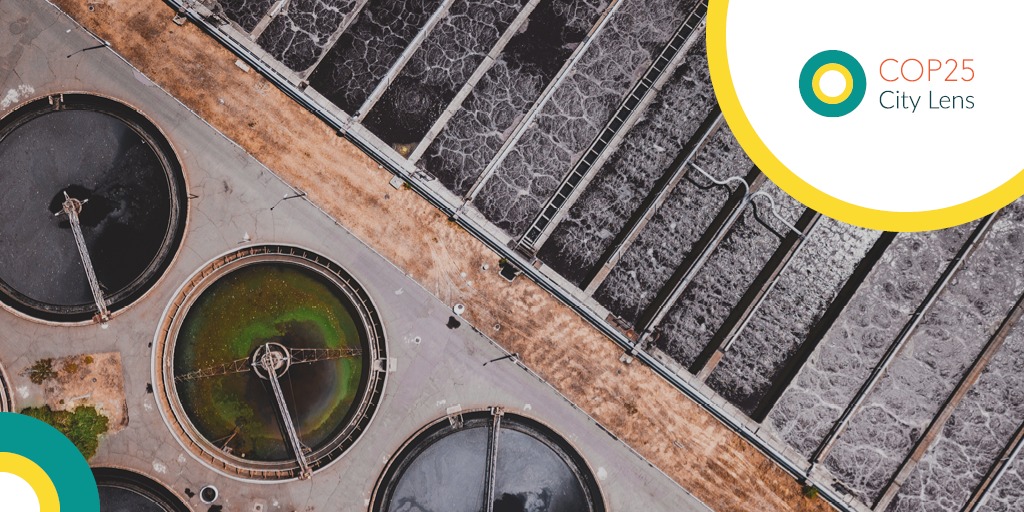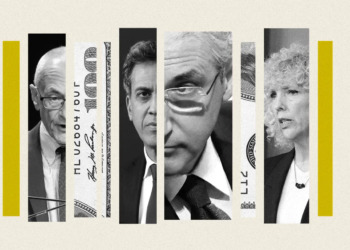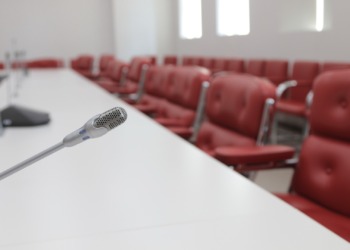The town of Turku, a member of ICLEI’s Green Circular Cities Coalition, was in the spotlight at COP25’s circularity sessions thanks to its exemplary circularity practices and results.
This article, first published on the ICLEI blog, is part of our “COP25” Editorial Series, done in partnership with ICLEI — Local Governments for Sustainability.
Turku, Finland, which is an active member of ICLEI’s Green Circular Cities Coalition, was a leading player in sessions dedicated to circularity over the past two days at COP25. And rightfully so. After committing to becoming carbon neutral by 2040 at the Paris Summit in 2015, the city has since challenged itself with an even more aggressive goal of achieving neutrality by 2029, which also happens to be the city’s eight-hundredth birthday.
This target is made possible by such ambitious projects as a new wastewater treatment plant that provides 14 different municipalities with 10% of their overall heating and cooling requirements. Improved nutrient capture and the centralized treatment has led to significant improvements to the ecological condition of the adjacent Archipelago Sea – an 83% decrease in phosphorous load in the Turku marine area.
At the same time, the sludge from this process is being harnessed as energy, resulting in an overall net positive energy rating for the project.
Turku Mayor Arve, speaking in an interview following her participation in Tuesday’s High Level Circular Economy roundtable, says the city decided to fast-track this goal to 2029 “because we realized we were getting much better [at reducing their carbon footprint].”
Based on what they’ve learned in recent years, she says “I think that cities as well as businesses, not to mention countries and national governments, should take more ambitious goals and just start working. Because then you see there is a lot of things you can do, and you get bigger results than you think you can achieve in the first place.”
The city is taking a systemic approach toward climate action and circularity is key both in town and around town. Alongside decarbonisation measures, the city of Turku has been supporting the development of circular economy initiatives in the surrounding region.
https://www.youtube.com/watch?v=UVylsfMhrYs
In partnership with ICLEI and the Finnish Innovation Fund Sitra, the city released a policy brief exploring how circular economy measures cut GHG emissions with practical examples from the region.
Circular development offers an implementation-oriented framework to decrease demand for new resources and reduce waste and pollution, while supporting local economic development. It’s a “win-win” model for the city, its businesses and residents, as Mayor Arve summarized at another side-event called “De-Carbonization and SDGs Localization: Challenge of Local and Regional Governments to achieve circulating and ecological economy,” organized by ICLEI Japan.
Mayor @MinnaArve at #cop25 sharing @CityOfTurku’s efforts to collaboratively implement a fair transition combining decarbonization with #CircularTurku and #climatepositive2029 goals.
Did you know #Turku is part of the #UrbanTransitions Alliance? More at https://t.co/tHbHNGKKdM pic.twitter.com/C79VSEL9HU
— ICLEI (@ICLEI) December 10, 2019
Turku has been an active participant in ICLEI’s Green Circular Cities Coalition (GCCC), and recently joined the Urban Transitions Alliance. In the GCCC, Turku got to learn best practices from other cities, such as Nagano, which is also focused on initiatives tied to energy recovery from wastewater as well as food waste reduction; and Yokohama, which is tackling plastics and food waste.
Greening economic growth doesn’t make it more sustainable. In a true circular economy, we produce and consume less. And we redistribute and regenerate more.
— Jason Nardi, Coordinator at RIPESS
One of the central themes of this week’s circularity sessions was the need to not just tap into existing energy, but to use fewer resources in the first place. Jason Nardi, Coordinator with RIPESS, a not for profit organization focused on social solidarity and inclusion, observed that “greening economic growth doesn’t make it more sustainable. In a true circular economy, we produce and consume less. And we redistribute and regenerate more.” And we need to accelerate this process he said by embarking on “a new urban agenda that is by and for the people. One that is participatory, inclusive, fair and equitable.”
Nardi said that one of the key approaches to circularity for cities is to create a “strong political will to re-municipalize services to enable the community to do things like cooperative housing, decentralized energy production and waste management, with a special focus on local materials and knowledge. It’s time to give control back to the people.”
One example he cited where this has already happened, was in the Indian city of Kholapur, where “after years of struggle, a women-led co-op with support from local unions, convinced city officials to rebuild their village using locally sourced materials.” Some of the homes in this community have been built with nothing but discarded plastics, recycled bricks and beer bottles. All in all, he says it was a true community effort, involving residents, local schools, hospitals, even the local farmer’s market.
Related Articles: Female Mayor ‘Warriors’ of the Amazon Inspire COP25 Delegates With Stories of Resilience | Early Days of COP25 Highlight Plight of Most Vulnerable Nations
At a separate Circular Cities for Nature session, organized in collaboration with the Global Platform for Sustainable Cities (GPSC), a project of the (Global Environment Fund), cities from the developing world showed how they are reducing energy consumption while striving for a more circular economy. Alexandra González Marín, Director of Environmental Affairs for the City of Campeche, Mexico, told fellow panel members they were in the midst of establishing a new paradigm for their city, one that is: efficient, smart and sustainable.
“Our municipality’s first objective is to reduce inequality and the second, is to protect the environment,” she said, and one of the biggest challenges her community faces is “waste and where to put it.”
They have multiple goals tied to waste reduction as a logical starting point to reduce the burden of her community. And then with the waste they do have, to revalorize or reuse up to 50% of all organic waste for such applications as fertilizer. “For us, waste separation and management are the key to restoring our local ecosystems,” she observed.
You can’t do it all alone. You need the cooperation of regional, national and international partners as well – partners you can get feedback from and learn about what you can do better.
— Minna Arve, Mayor of Turku
Understanding the breadth and depth of the players involved in circular economic strategies has been a part of Turku’s plan from the beginning. An initial stock-take showed over 700 city and regional actors, actors who will be necessary for the achievement of Turku’s goals. Mayor Arve observed, “You can’t do it all alone. You need the cooperation of regional, national and international partners as well – partners you can get feedback from and learn about what you can do better.”










